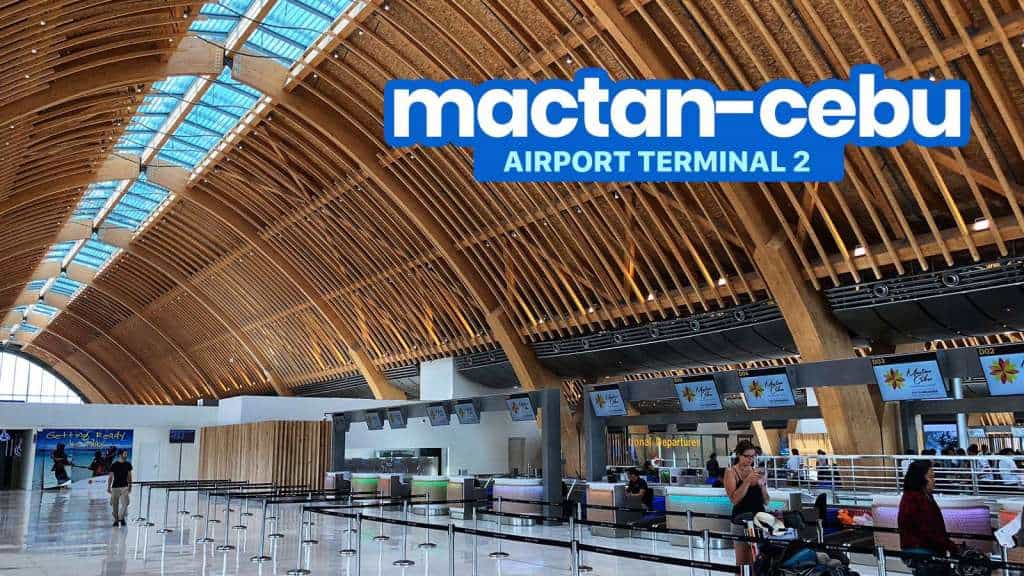For anyone who has visited Cebu the past couple of months, you may have noticed a new structure — a series of large arches — greeting you as you land on the runway. This is the Mactan-Cebu International Airport Terminal 2, just alongside the old airport (now called MCIA Terminal 1).
MCIA Terminal 2 just recently started full commercial operations, opening its doors to visitors from all over the world. With its eye-catching design and innovative handling and security systems, the new terminal promises to provide travelers with a world-class airport experience, making traveling to and from Cebu that much more special.
Cebu has always been at the forefront of the Philippine tourism industry, and MCIA is a primary gateway that connects travelers to top destinations in the region (and beyond). Even before the launch of Terminal 2, MCIA is the second-largest airport facility in the Philippines, with 10 million passengers passing through it last year.
As tourism in the country continues to surge, particularly in the Visayas, Cebu is in prime position to take on the growing influx of travelers. In this opportune time, the new MCIA Terminal 2 is set to provide a fresh “first impression” to visitors.
We got to visit the new terminal at its launch, and tell you what, it’s definitely a different airport experience. Here are some takeaways you may find handy when you get the chance to visit:
Mactan-Cebu International Airport Terminal 2’s design is inspired by Cebuano culture.
One thing that will seize your attention right off the bat is the terminal’s design. If you’re a traveler who just spent most of the day flying, Terminal 2 is a sight for sore eyes. To put it simply, every nook and cranny of Terminal 2 is candy for social media.
The terminal’s design is heavily inspired by Cebuano and Visayan culture. You can see the influence not just on the architecture, but also with the materials used, the splash of tropical colors, and even in the uniforms of the staff.
There are the towering timber arches that your eyes can’t help but follow upward. For some reason, they remind me of the frames of handcrafted Cebu guitars. These arches are made from high-quality timber that are expected to last a couple hundred years.
Then there’s the airport floor, laid with mother-of-pearl shells, a sparkling reminder of Cebu’s famous beaches and marine attractions. The check-in counters are covered in intricate weaves, reminiscent of banig and Visayan baskets.
Even the little things, like toilets with moss walls, and the staff with their bright uniforms and headdresses, add to the festive Visayan vibe.
The new airport will accommodate all international flights to and from Cebu.
All international flights have been migrated to MCIA Terminal 2. This means the old terminal, Terminal 1, will now only accommodate domestic flights. For now, you can only avail of Terminal 2 amenities if you’ve booked an international flight.
Currently, Mactan caters to 23 international destinations. That’s in addition to 33 domestic destinations, with flights conducted by 26 partner carriers. The new terminal will still share the same runway as Terminal 1.
Among carriers, Cebu Pacific has the largest presence in MCIA. Cebu’s namesake carrier conducts 385 flights weekly, more than any other airline. With the opening of Terminal 2, those numbers can rise even higher in the future.
Terminal accommodations are all about efficiency and comfort.
At 65,500 square meters, MCIA Terminal 2 has enough space to accommodate up to 4.5 million passengers every year. All that space, plus its state-of-the-art facilities, are designed to maintain efficiency in loading, security, and overall comfort.
When you enter the Terminal 2 premises, you’ll notice the lack of x-ray machines at the entrance. That means no more queues just to enter the airport. All security procedures take place after you’ve already checked in. A total of 48 counters are located in the four halls Departures area, so checking in is less of a hassle as well.
Once inside, you’ll be amazed at the state-of-the-art security and boarding facilities, a step ahead of other airports in the country. The high-speed baggage handling system features a four-level inline screening procedure, checking your baggage multiple times for restricted items, all in one go.
The terminal is a haven for some last-minute shopping and dining.
Then there’s food and shopping. Need to grab some chow while waiting for your boarding? How about some last-minute pasalubong and souvenirs? Terminal 2 has lots to offer to keep travelers filled, and fulfilled.
With 3,000 square meters of terminal space reserved for commercial establishment, expect a mall-like variety of retail and dining choices . Terminal 2 has it’s own pasalubong center, a walk-through duty free section, massage services, private lounges, and even a bar!
Getting to the city center is easy and affordable.
Every 15 minutes, MyBus shuttles pick up passengers at the Arrivals section. These buses will transport the passengers to SM City Cebu, where there are terminals going to different parts of the city and province. The same bus service brings people from SM City Cebu to the airport.
For those looking for a transfer from MCIA Terminal 2 to Terminal 1 and vice versa, another set of shuttles are available, bringing passengers between the terminals every 10 minutes.
Aside from MyBus shuttles, there are also airport taxis and vans available outside the Arrivals area, if you prefer to be chauffeured directly to your hotel.
Special thanks to our friends at Cebu Pacific for flying us to Cebu for the MCIA T2 launching. Cebu Pacific conducts flights to 25 destinations from MCIA, including flights to Incheon, Hong Kong, Narita and Singapore.
2️⃣0️⃣1️⃣8️⃣ • 9️⃣ • 1️⃣0️⃣
